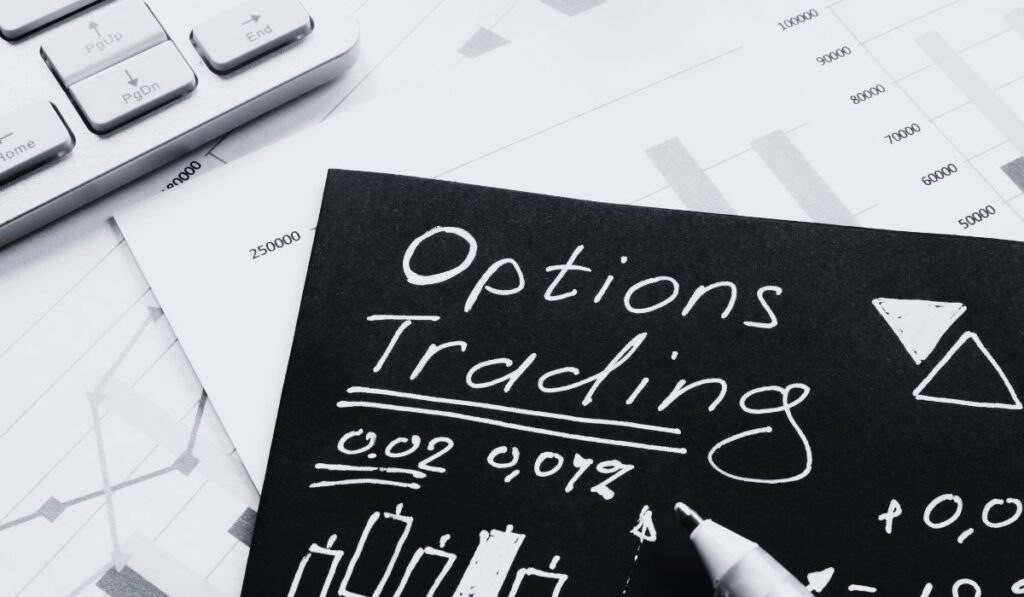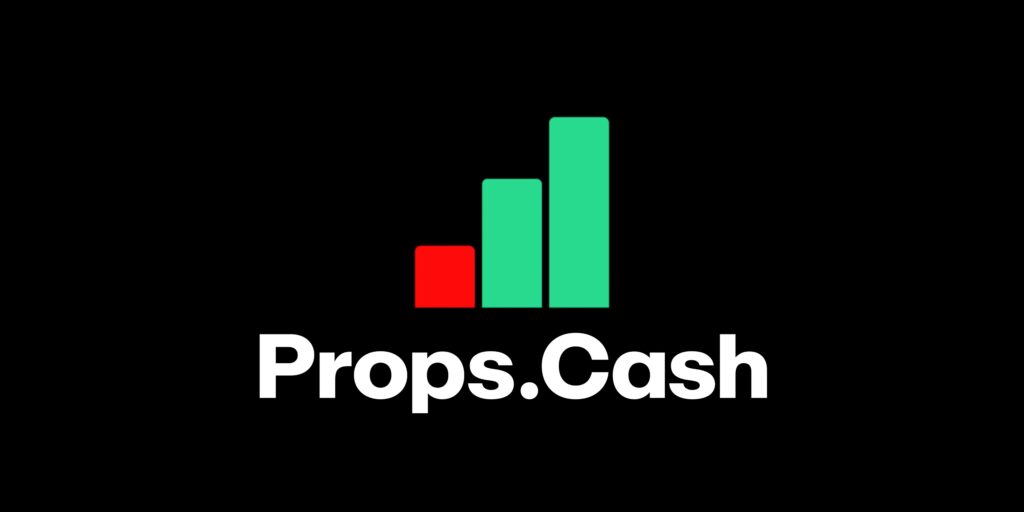Table of Contents
Leverage in Prop Trading
You’ve probably heard the term “prop trading” and wondered what it’s all about. Or maybe you’ve heard about the power of leverage but aren’t quite sure how it fits into the prop trading world.
Understanding leverage in prop trading is like knowing the secret sauce of a recipe; it can make or break your trading game. If you’re a funded trader, this article is especially for you. We’re going to explore how leverage works and, most importantly, show you how to use it wisely to amplify your profits (and avoid pitfalls).
By the end of this read, you’ll have a solid grasp of what prop trading is, the role of leverage, and how to navigate the risks and rewards.
What is Proprietary Trading?
Alright, let’s get down to business. What exactly is proprietary trading, and why should you care? Proprietary trading, or “prop trading” for short, is when a financial firm trades stocks, bonds, currencies, commodities, or other financial instruments with its own money, rather than trading on behalf of clients. Think of it as a high-stakes poker game where the firm is both the player and the bank.
How Prop Trading Differs from Other Forms of Trading
You might be thinking, “Isn’t all trading like that?” Not quite. In most cases, financial firms trade on behalf of their clients and earn a commission or fee for their services. In prop trading, the firm is taking on the risk itself in hopes of making a direct profit.
The Role of Funded Traders in Prop Trading
So, where do funded traders fit into all of this? Funded traders are essentially the star players on the prop trading team. They’re given a specific amount of capital by the firm to trade with. Their job is to make profitable trades and generate returns for the firm. In exchange, they usually get a cut of the profits.
Funded traders are crucial in the prop trading ecosystem because they’re the ones on the front lines, making the trades that can lead to big wins (or losses) for the firm.
Understanding Leverage
So, you’ve got the basics of prop trading down. Awesome! Now we move on to something that’s like the turbo button on a video game controller for traders: leverage.
What is Leverage?
Leverage is basically borrowed money or assets that you use to increase your potential return on investment. Imagine you’re trying to lift a heavy box. Doing it alone is tough, but if you use a lever, suddenly that box feels a lot lighter. In trading, leverage acts as that lever, helping you lift bigger positions than you could with just your own money.
In prop trading, you’re often given access to a lot of leverage because you’re trading with the firm’s money. This can be a double-edged sword. On one hand, you can make bigger trades and potentially earn more. On the other hand, you can also lose more. So, it’s crucial to know how to use this tool wisely.
The Mathematics of Leverage
Don’t worry; we’re not diving into a complex math lecture here. The math behind leverage is actually pretty straightforward. The most common way to express leverage is through a ratio. For example, if you have 10:1 leverage, that means for every $1 of your own money, you can control $10 in trades.
Simple Formulas and Examples
Here’s a quick formula to calculate how much you can trade with leverage:
Total Trading Power=Your Capital×Leverage Ratio
So, let’s say you have $1,000 and you’re using 10:1 leverage. Your total trading power would be:
$1,000 \times 10 = $10,000
That means you can make trades worth up to $10,000, even though you only started with $1,000 of your own money.
How Leverage Ratios Work
Different trading firms offer different leverage ratios, like 5:1, 10:1, or even 100:1. The higher the ratio, the more money you can control, but also the higher the risk. It’s like driving a car: the faster you go, the less time you have to react if something goes wrong. So, choosing the right leverage ratio is crucial, and it’s often a balancing act between risk and reward.
The Benefits of Using Leverage in Prop Trading
Okay, so we’ve covered what leverage is and how the math works. Now, let’s get to the fun part: the benefits! Leverage is a tool that can seriously amplify your trading game. But remember, with great power comes great responsibility. Let’s break down why leverage can be your best friend in prop trading.
Amplifying Profits
First and foremost, leverage can seriously boost your profits. How? Well, it allows you to control a larger position with a smaller amount of your own capital. This means that even small market movements can result in larger gains (or losses, but we’ll get to that later).
Real-World Examples
Let’s say you’re trading with $1,000 and using 10:1 leverage, giving you a total trading power of $10,000. If the asset you’re trading increases by 5%, here’s what happens:
- Without leverage: $1,000 x 0.05 = $50 profit
- With 10:1 leverage: $10,000 x 0.05 = $500 profit
See the difference? That’s the power of leverage in action!
Capital Efficiency
The second big advantage of using leverage is capital efficiency. This means you can make the most out of the limited capital you have. You don’t need to tie up all your funds in a single trade, leaving you free to explore other trading opportunities.
Scenarios Where This is Beneficial
- Diversification: With more trading power, you can spread your capital across different assets, reducing your risk.
- Quick Moves: Sometimes opportunities in the market are fleeting. Having access to leverage allows you to take advantage of them without scrambling to free up capital.
- Testing Strategies: If you’re looking to test multiple trading strategies, leverage allows you to do so without committing all your funds to one approach.
Leverage can be a fantastic tool for amplifying profits and making your capital work harder for you. But remember, it’s not all sunshine and rainbows; leverage comes with its own set of risks, which we’ll dive into in the next section.
The Risks of Using Leverage
Alright, we’ve talked about the good stuff, but now it’s time for a reality check. Leverage is like fire: it can keep you warm and cook your food, but it can also burn your house down if you’re not careful. Let’s get into the nitty-gritty of the risks you should be aware of when using leverage in prop trading.
Amplified Losses
Remember how we said leverage can amplify your profits? Well, it’s a double-edged sword; it can also amplify your losses. If the market moves against you, you could end up losing more money than you initially invested.
Real-World Examples of When Things Go Wrong
Let’s go back to our previous example where you’re trading with $1,000 and using 10:1 leverage, giving you $10,000 in trading power. If the asset you’re trading drops by 5%, here’s the damage:
- Without leverage: $1,000 x 0.05 = $50 loss
- With 10:1 leverage: $10,000 x 0.05 = $500 loss
Ouch! That’s a big hit, and it shows how quickly things can go south when you’re using leverage.
Margin Calls and Liquidation
Now, let’s talk about something that can give traders nightmares: margin calls. A margin call happens when your account balance falls below a certain level because of trading losses. When this happens, the trading firm will ask you to deposit more money to cover the losses. If you can’t, they might close out your positions to limit further losses.
How It Can Lead to the Liquidation of Positions
If you can’t meet the margin call by depositing more funds, the firm has the right to liquidate your positions, often at the worst possible time. This means they’ll sell off your assets to cover the losses, and you might end up with nothing. It’s like having your car repossessed because you couldn’t make the payments; not a situation anyone wants to be in.
So that’s the darker side of leverage. It’s a powerful tool, but it’s not without its risks. In our next section, we’ll discuss some best practices to manage these risks and use leverage to your advantage.
Best Practices for Using Leverage in Prop Trading
So, we’ve covered the good, the bad, and the ugly of leverage. So how to use this powerful tool wisely? After all, a chainsaw is super useful for cutting down trees, but you wouldn’t use it without some safety measures, right? The same goes for leverage in prop trading.
Risk Management Strategies
First things first, you’ve got to have a solid risk management strategy. This is your safety net, your seatbelt, your life jacket—whatever you want to call it.
How to Manage the Risks Associated with Using Leverage
- Set Stop-Loss Orders: This is a tool that automatically sells your position if the price drops to a certain level, helping you limit your losses.
- Diversify: Don’t put all your eggs in one basket. Spread your trades across different assets to mitigate risk.
- Monitor Constantly: Markets can change in the blink of an eye. Always keep an eye on your positions and be ready to act.
Tools and Techniques for Risk Management
- Trading Software: Use software that allows you to set automatic stop-loss orders and alerts.
- Risk/Reward Ratio: Before entering a trade, calculate the risk/reward ratio to ensure the potential gains are worth the risk.
- Position Sizing: Never risk more than a small percentage of your total trading capital on a single trade.
How Much Leverage is Too Much?
The million-dollar question. How much leverage should you actually use? The answer isn’t one-size-fits-all, but there are some guidelines you can follow.
Guidelines for Determining Appropriate Levels of Leverage
- Experience Level: If you’re new to trading, it’s wise to start with lower levels of leverage and work your way up as you gain more experience.
- Market Conditions: In a highly volatile market, using too much leverage can be risky.
- Type of Asset: Different assets come with different levels of risk. Stocks might be less risky than, say, cryptocurrencies.
Factors to Consider
- Your Risk Tolerance: Are you comfortable with high-risk, high-reward scenarios, or do you prefer playing it safe?
- Financial Goals: Are you looking for steady, long-term gains, or are you in it for quick wins?
- Regulatory Limits: Some jurisdictions have limits on how much leverage you can use, so make sure you’re aware of these.
Before we wrap up, there’s one more important topic we should touch on, especially for our readers who are concerned with aligning their trading activities with Islamic principles. You might be wondering, “Is leverage trading Halal?” It’s a great question and one that deserves its own discussion. So, let’s dive into how leverage trading fits—or doesn’t fit—within the framework of Islamic finance.
Is Leverage Trading Halal?
In the world of Islamic finance, earning or paying interest—known as riba—is a no-go. It goes against the core values of fairness and justice. Traditional leverage trading usually involves interest, making it off-limits in a Halal context.
But don’t worry, there are workarounds that align with Islamic principles. You might hear terms like “Islamic leverage” or “interest-free leveraged trading.” These options use financial tools that meet Sharia law requirements.
Key Guidelines for Halal Leveraged Trading:
- Share Profits and Losses: In Islamic finance, both parties in a deal should share the ups and downs. So, instead of paying interest, the trader and the fund provider could split the profits or losses from the trade.
- Use Asset-Based Financing: Islamic finance loves deals backed by real-world assets. You can set up your leverage trading to link directly to the assets you’re trading. One common method is murabaha, where the lender buys the assets and then sells them to the trader at a pre-set higher price.
- Manage Risks Carefully: Risk-sharing is big in Islamic finance, and speculation is frowned upon. So, if you’re going to trade with leverage, make sure you have solid risk management strategies in place. Think stop-loss limits, diversified portfolios, and thorough market analysis.
- Steer Clear of Forbidden Sectors: Islamic law bans investments in sectors like gambling, alcohol, and pork. Make sure the assets you’re trading in a leveraged manner are Halal.
Remember, Islamic finance rules can differ depending on who you ask or where you are. It’s always a good idea to get advice from scholars or experts in Islamic finance to make sure you’re on the right track.
Conclusion
Alright, that brings us to the end of our deep dive into leverage in prop trading. Let’s quickly recap what we’ve learned:
- What Prop Trading Is: It’s trading with a firm’s money, aiming to make direct profits.
- Understanding Leverage: It’s a tool that can amplify both profits and losses.
- Benefits and Risks: Leverage can make your capital more efficient but comes with its own set of dangers like amplified losses and margin calls.
- Best Practices: Risk management and choosing the right level of leverage are key to success.
- Islamic Finance and Leverage: For those looking to align their trading with Islamic principles, we’ve explored how to make leveraged trading Halal.
Final Thoughts and Recommendations for Funded Traders
If you’re a funded trader, leverage can be a powerful ally, but it’s crucial to use it wisely. Always have a risk management strategy in place, be mindful of how much leverage you’re using, and never stop learning. And for those concerned with Islamic principles, remember to consult experts to ensure your trading activities are Halal.
So, go out there and trade smart, not hard. And remember, in prop trading, knowledge is your most valuable asset.













